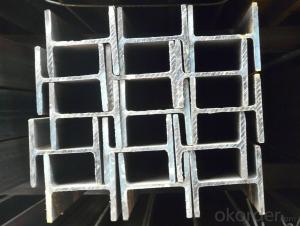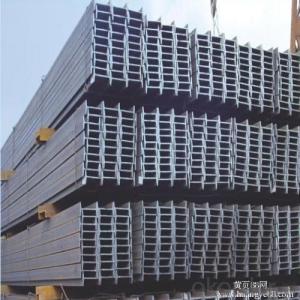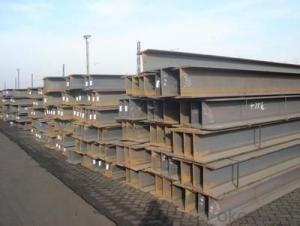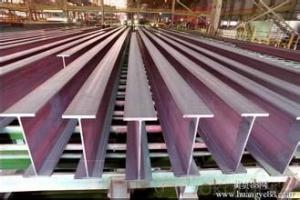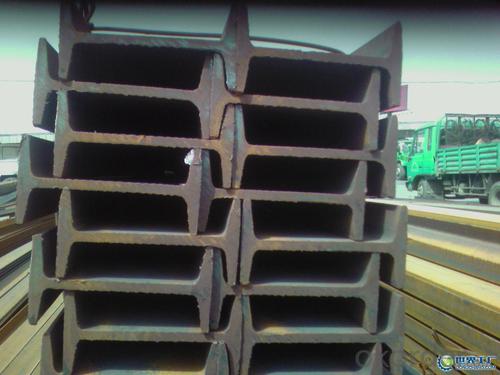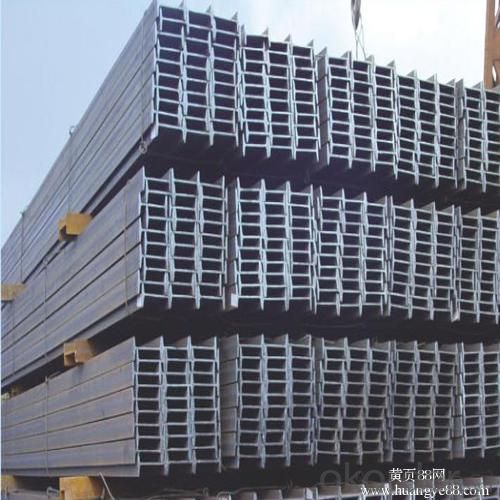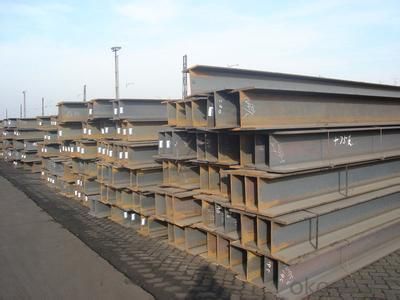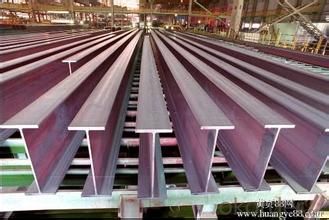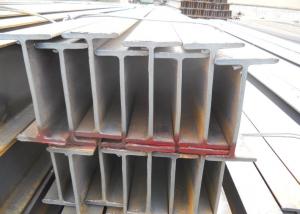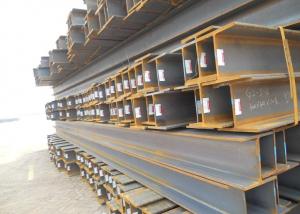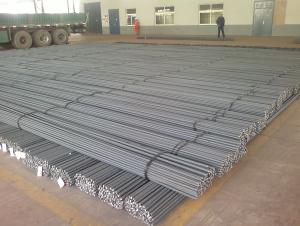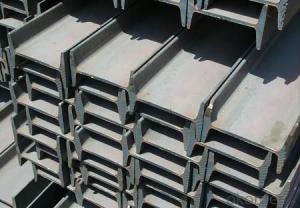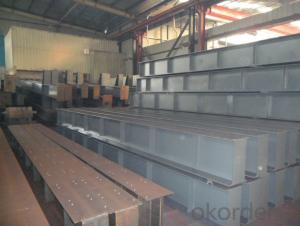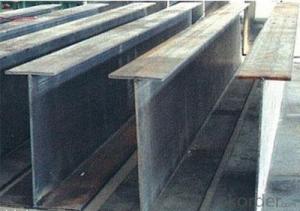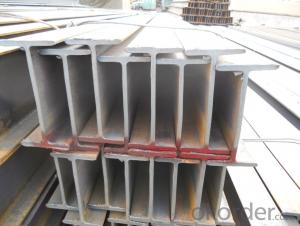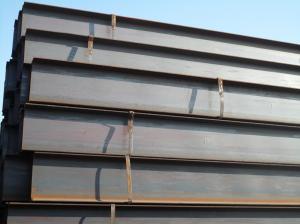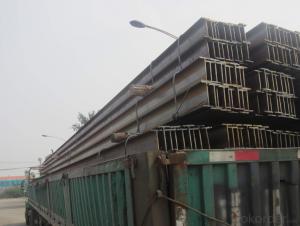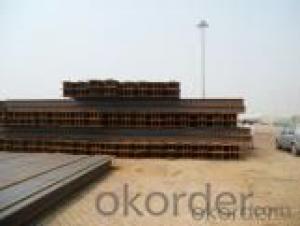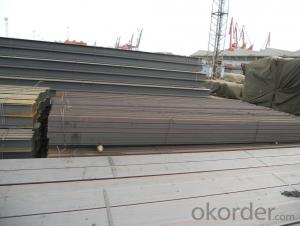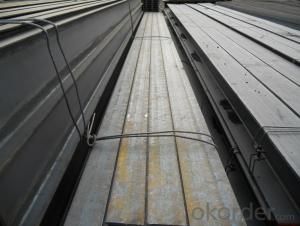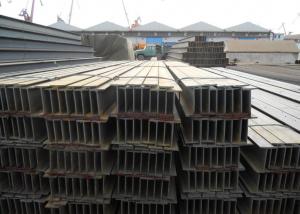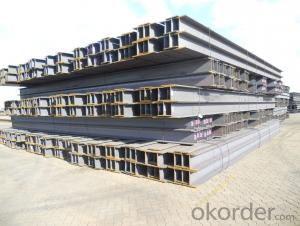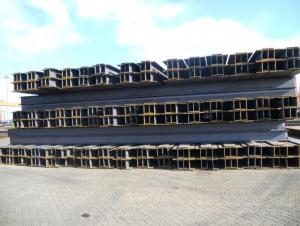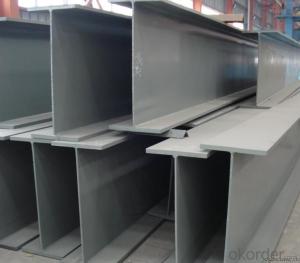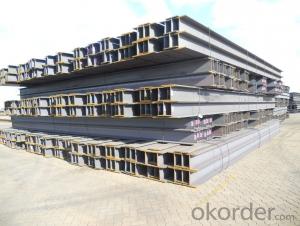Hot Rolled H-Beam Steel JIS G3101
- Loading Port:
- China Main Port
- Payment Terms:
- TT or LC
- Min Order Qty:
- -
- Supply Capability:
- -
OKorder Service Pledge
OKorder Financial Service
You Might Also Like
Product Description:
OKorder is offering Hot Rolled H-Beam Steel JIS G3101 at great prices with worldwide shipping. Our supplier is a world-class manufacturer of steel, with our products utilized the world over. OKorder annually supplies products to European, North American and Asian markets. We provide quotations within 24 hours of receiving an inquiry and guarantee competitive prices.
Product Applications:
Hot Rolled H-Beam Steel JIS G3101 are ideal for structural applications and are widely used in the construction of buildings and bridges, and the manufacturing, petrochemical, and transportation industries.
Product Advantages:
Hot Rolled H-Beam Steel JIS G3101 with high quality are durable, strong, and resist corrosion.
Main Product Features:
· Premium quality
· Prompt delivery & seaworthy packing (30 days after receiving deposit)
· Corrosion resistance
· Professional Service
· Competitive pricing
Product Specifications:
1. Standard: JIS G3101
2. Grade: SS400 or Equivalent
3. Length: 6m,10m, 12m as following table
4. Invoicing on theoretical weight or actual weight as customer request
5.Payment: TT or L/C
6. Sizes:
SIZE(mm) | DIMENSION(kg/m) |
100*100 | 16.9 |
125*125 | 23.6 |
150*75 | 14 |
150*150 | 31.1 |
148*100 | 20.7 |
198*99 | 17.8 |
200*100 | 20.9 |
248*124 | 25.1 |
250*125 | 29 |
300*150 | 36.7 |
298*149 | 32 |
200*200 | 49.9 |
294*200 | 55.8 |
346*174 | 41.2 |
350*175 | 49.4 |
244*175 | 43.6 |
175*175 | 40.4 |
294*200 | 55.8 |
298*201 | 64.4 |
346*174 | 41.2 |
350*175 | 49.4 |
400*200 | 65.4 |
396*199 | 56.1 |
450*200 | 74.9 |
446*199 | 65.1 |
340*250 | 78.1 |
500*200 | 88.1 |
300*150 | 36.7 |
Commercial building structure ;Pre-engineered buildings; Machinery support structure; Prefabricated structure; Medium scale bridges; Ship-building structure. etc.
Packaging & Delivery of Hot Rolled H-Beam Steel
1. Packing: it is nude packed in bundles by steel wire rod
2. Bundle weight: not more than 3.5MT for bulk vessel; less than 3 MT for container load
3. Marks:
Color marking: There will be color marking on both end of the bundle for the cargo delivered by bulk vessel. That makes it easily to distinguish at the destination port.
Tag mark: there will be tag mark tied up on the bundles. The information usually including supplier logo and name, product name, made in China, shipping marks and other information request by the customer.
If loading by container the marking is not needed, but we will prepare it as customer request.
4. Transportation: the goods are delivered by truck from mill to loading port, the maximum quantity can be loaded is around 40MTs by each truck. If the order quantity cannot reach the full truck loaded, the transportation cost per ton will be little higher than full load.
5. Delivered by container or bulk vessel
Production flow of Hot Rolled H-Beam Steel
Material prepare (billet) —heat up—rough rolling—precision rolling—cooling—packing—storage and transportation
FAQ:
Q1: Why buy Materials & Equipment from OKorder.com?
A1: All products offered byOKorder.com are carefully selected from China's most reliable manufacturing enterprises. Through its ISO certifications, OKorder.com adheres to the highest standards and a commitment to supply chain safety and customer satisfaction.
Q2: Can fit in the containers of 20fts the steel beams of 6M?
A2: No proble, we can put them into the containers in the form sideling.
Q3: The products are invoicing on theoritical weight or on actual weight?
A3: We can do it in both manners, according to the customers' request.
Images:
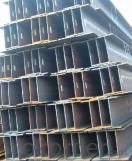
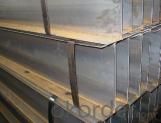
- Q: How do steel H-beams contribute to the overall sustainability of a transportation hub?
- Steel H-beams contribute to the overall sustainability of a transportation hub in several ways. Firstly, they are a durable and long-lasting structural element, ensuring the longevity of the infrastructure. This reduces the need for frequent repairs or replacements, thereby minimizing resource consumption and waste generation. Additionally, steel H-beams have a high strength-to-weight ratio, allowing for efficient and lightweight construction, which reduces the overall material and energy requirements during the construction process. Furthermore, steel is a highly recyclable material, making it easy to recover and reuse at the end of its service life, promoting a circular economy. Overall, the use of steel H-beams in a transportation hub enhances its sustainability by providing a robust, efficient, and environmentally friendly infrastructure solution.
- Q: Can steel H-beams be used in the construction of airports?
- Indeed, airports can utilize steel H-beams in their construction endeavors. Steel H-beams, renowned for their resilience and adaptability, are frequently employed within the construction sector for a multitude of structural applications. When it comes to airport construction, steel H-beams find themselves employed for an array of purposes. These include facilitating the roof structure of terminal buildings, establishing the framework for hangars, constructing bridges and walkways, as well as providing sturdy foundations for aircraft parking areas and runways. The utilization of steel H-beams in airport construction presents an enduring and cost-efficient resolution, guaranteeing the steadfastness and security of the airport's infrastructure.
- Q: Can Steel H-Beams be used in residential housing or apartment buildings?
- Yes, Steel H-Beams can be used in residential housing or apartment buildings. Steel H-Beams are a popular choice for structural support in construction due to their strength, durability, and versatility. They provide excellent load-bearing capabilities, making them suitable for larger structures such as residential housing and apartment buildings where heavy loads need to be supported. Additionally, Steel H-Beams have the advantage of being lightweight compared to other materials like wood or concrete, allowing for more flexibility in design and ease of construction. Their use in residential and apartment buildings ensures the overall stability and integrity of the structure, making them a reliable choice for construction projects.
- Q: Can steel H-beams be used in educational institution construction?
- Certainly, educational institution construction can incorporate steel H-beams. The utilization of steel H-beams is widespread in the construction industry owing to their exceptional strength, durability, and adaptability. They offer structural stability and support across diverse building applications, including educational institutions. H-beams are instrumental in constructing the framework of the building, encompassing columns, beams, as well as providing floor support and roof structures. Moreover, steel H-beams are capable of withstanding substantial loads and boast an extended lifespan, rendering them a fitting choice for robust construction in educational buildings.
- Q: What are the different methods of joining Steel H-Beams together?
- There are several methods of joining steel H-beams together, including welding, bolting, and using connectors such as steel plates or angle brackets.
- Q: Can Steel H-Beams be used in agricultural or industrial buildings?
- Steel H-Beams have a wide range of applications in agricultural and industrial buildings. Their strength and durability make them a common choice in construction. They offer structural support and can handle heavy loads, making them suitable for various purposes. In agricultural buildings, Steel H-Beams can be utilized to provide a strong framework for the structure and support the roof. They can also be used as columns or beams to create open spaces or support mezzanine floors. Similarly, in industrial buildings, Steel H-Beams are frequently employed for the same reasons, providing stability and versatility for large-scale operations. Furthermore, Steel H-Beams can be easily customized and fabricated to meet specific design requirements, which contributes to their popularity in both agricultural and industrial construction projects.
- Q: Can Steel H-Beams be used in marine or waterfront construction?
- Yes, Steel H-Beams can be used in marine or waterfront construction. They are commonly utilized in these applications due to their durability, strength, and resistance to corrosion. Steel H-Beams provide structural support and stability, making them suitable for various marine and waterfront structures such as piers, docks, and bridges.
- Q: Can steel H-beams be customized to specific lengths?
- Yes, steel H-beams can be customized to specific lengths. Steel H-beams are commonly used in construction and are available in various standard lengths. However, if the standard lengths do not meet the specific requirements of a project, they can be customized to the desired length. This can be done by cutting the beams to the required length and then welding or bolting the ends together to create the desired length. Customizing the length of steel H-beams allows for more flexibility in construction projects and ensures that the beams fit perfectly for a specific application.
- Q: Are steel H-beams suitable for use in the construction of hospitality resorts or hotels?
- Yes, steel H-beams are suitable for use in the construction of hospitality resorts or hotels. Steel H-beams offer several advantages that make them the preferred choice for construction in the hospitality industry. Firstly, steel H-beams have high strength and durability, making them capable of supporting heavy loads and providing structural stability. This is crucial for large-scale construction projects such as hospitality resorts or hotels, which often require multiple floors, large open spaces, and the ability to withstand potential natural disasters like earthquakes or hurricanes. Additionally, steel H-beams are lightweight compared to other construction materials, such as concrete or timber, which makes them easier to transport and handle during the construction process. This can lead to cost savings and faster construction times, which are essential factors in completing hospitality projects on time and within budget. Moreover, steel H-beams offer design flexibility, allowing architects and engineers to create innovative and visually appealing structures. They can be used to create large, open atriums, spacious ballrooms, and other unique architectural features that are often found in hospitality resorts or hotels. Another advantage of steel H-beams is their resistance to fire, pests, and rot. This ensures the long-term durability and safety of the structure, reducing maintenance and repair costs over time. Lastly, steel H-beams are environmentally friendly as they are typically made from recycled materials and can be recycled again at the end of their life cycle. This aligns with the growing trend of sustainable and eco-friendly construction practices in the hospitality industry. In conclusion, steel H-beams are highly suitable for use in the construction of hospitality resorts or hotels due to their strength, durability, design flexibility, fire resistance, and environmental benefits. They provide a reliable and efficient solution for constructing large-scale projects in the hospitality sector, ensuring the safety, comfort, and satisfaction of guests.
- Q: What are the welding requirements for steel H-beams?
- The welding requirements for steel H-beams typically involve using a specific welding process, such as shielded metal arc welding (SMAW) or gas metal arc welding (GMAW), to ensure proper fusion and strength. The welds should be performed by certified welders and meet specific codes and standards, such as those set by the American Welding Society (AWS). Additionally, proper pre-weld and post-weld treatments, such as cleaning, preheating, and stress relieving, may be necessary to achieve high-quality welds and prevent issues like distortion or cracking.
Send your message to us
Hot Rolled H-Beam Steel JIS G3101
- Loading Port:
- China Main Port
- Payment Terms:
- TT or LC
- Min Order Qty:
- -
- Supply Capability:
- -
OKorder Service Pledge
OKorder Financial Service
Similar products
Hot products
Hot Searches
Related keywords

